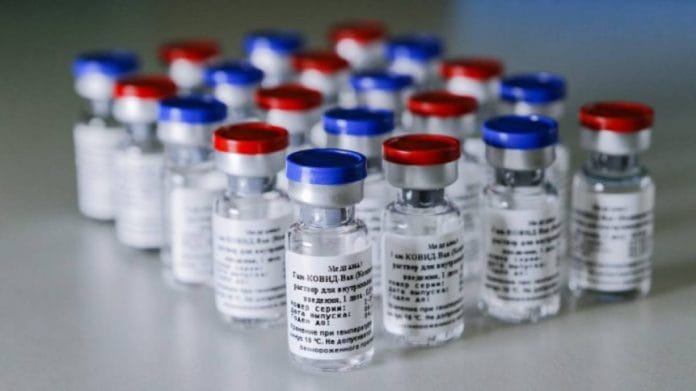New Delhi: Registered by Russia in August 2020, Sputnik V was the first licensed Covid vaccine in the world. In their earliest communications, the makers of Sputnik V had said they were eager to enter the Indian market. The Government of India, too, facilitated Phase III trials of the vaccine in India soon after its registration.
However, a sudden increase in infections in Russia earlier this year and some unforeseen complications in the plan to manufacture the vaccines indigenously have delayed the inclusion of the vaccine in the national programme.
The main problem, government officials say, is the fact that the adenovector (a weakened common cold virus) used for the second dose of Sputnik V is a “slow-growing” virus, which skews the production ratio of the two doses.
Sputnik V was given clearance by the Drugs Controller General of India (DCGI) in April. It is currently available at some private facilities, and the Russian makers of the vaccine have tied up with several companies for domestic manufacturing.
“There are some technological challenges that companies seem to be facing in the manufacture of the vaccine,” a health ministry official told ThePrint. “From what I understand, that is the reason we are still not making them in the country.”
Both Sputnik V and Covishield — one of the two vaccines in the national programme, the other being Covaxin — are based on the adenovirus vector. However, unlike Covishield, which uses the same vector for both doses, Sputnik V uses a different vector for each of the shots. This means that while the first and second doses of Covishield are the same, that is not the case for Sputnik V.
A member of the National Technical Advisory Group on Immunisation (NTAGI) told ThePrint on the condition of anonymity that “the ratio of production of the first dose to the second dose is about 4-5:1”, which means that only one second dose is produced for every 4-5 first doses manufactured.
“That is not just the case in India but also in Russia. The adenovirus used as a vector in the second dose is a slow-growing one. That is the reason for the delay. But we should have more clarity in a day or two,” the member added.
Speaking to ThePrint, a senior official associated with India’s vaccination programme said the Sputnik V “timelines have been pushed back a bit because of the unexpected surge in Russia”.
“We are in talks with the companies to understand when it may be possible to start procurement in sufficient numbers but we do not have any clarity yet,” the official added.
ThePrint reached Dr Reddy’s Laboratories, which is importing the vaccine into India, by email, phone and message, and the Russian Direct Investment Fund (RDIF), the Russian sovereign wealth fund that backed the development of Sputnik V, by email, to understand the reasons for the delay behind the vaccine’s inclusion in the national programme, but there was no response by the time of publishing this report.
Also Read: The science behind the Sputnik V vaccine & decoding India’s disastrous second wave
Sputnik V in India
So far, about 30.08 lakh doses of Sputnik V have been administered in India, according to data available on the CoWin portal.
In May, in its projections for vaccine availability from August to December, the Government of India said that it expected 15.6 crore doses of Sputnik V by the end of the year. This was part of the total 216 crore doses the government said would be available in the last five months of 2021.
A month later, when the Government of India was required to submit an affidavit in the Supreme Court on vaccine availability, that number had been revised to 125 crore doses but the expectation, according to the affidavit, still was that 10 crore doses of Sputnik V would be available.
Instead, India has had to make do with about 33 lakh Sputnik V doses, of which there was a higher proportion of the first-dose vaccines.
In a statement this July, the RDIF had said it expects Sputnik supplies to be manufactured in India from September.
As of Tuesday, India had altogether administered over 64 crore doses of Covid vaccines, according to Union health ministry data. On Monday, India crossed a crucial milestone as it was announced that at least 50 per cent of the eligible population had received at least one dose.
(Edited by Sunanda Ranjan)
Also Read: Russia’s Sputnik V vaccine with over 91% efficacy recommended for emergency use in India






